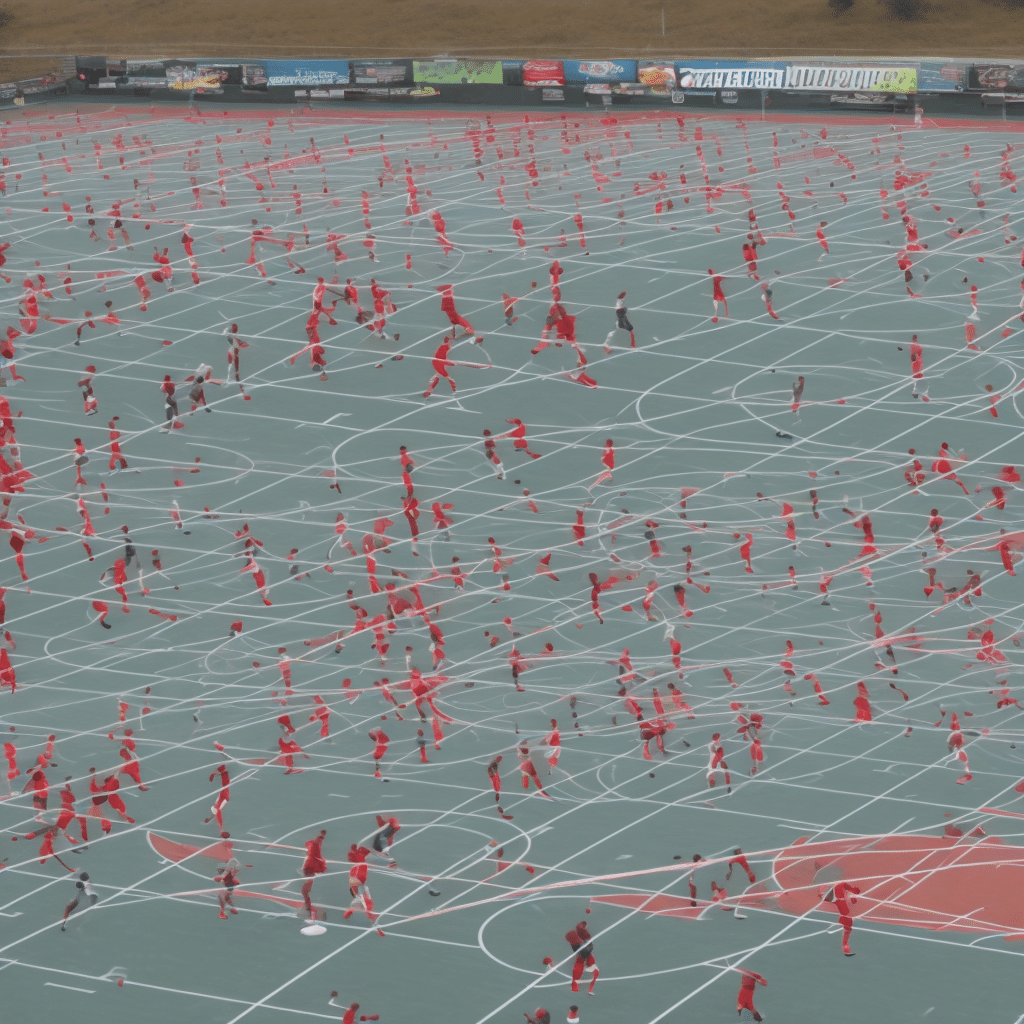Visualization is an effective tool that athletes have been using to enhance their skills, increase their performance, and achieve success. In fact, it’s widely recognized that the most successful athletes aren’t just physically superior, they have a mental edge that separates them from the pack. This article will explore the psychology of sports and how visualization can be used as a training mechanism to improve performance.
The Power of Visualization in Sports
The power of visualization lies in its ability to create a mental picture that’s almost as good as the real thing. It’s like a practice session held in the mind, where the brain can rehearse a skill or scenario without the physical strain of doing it. Research has shown that mental practices can enhance motivation, increase confidence and self-efficacy, improve motor performance, prime your brain for success, and increase states of flow.
A lire en complément : How Can Exoskeleton Technology Aid in the Training and Rehabilitation of Athletes?
Visualization, also known as mental imagery, involves the athletes imagining themselves in a specific environment or performing a specific activity. It’s a mental technique that requires attention, concentration, and being present in the moment. Athletes spend countless hours physically training their bodies, but rarely do they devote time to mentally train their brains. However, the mental aspect of sports is just as important, if not more so, as the physical aspect.
Mental Skills are as Important as Physical Skills
It’s a common misconception that athletes only need physical skills to succeed in sports. The reality is, mental skills play an equally important role in an athlete’s performance. Just like the physical skills, mental skills such as focus, discipline, and resilience can also be honed and improved with practice.
Sujet a lire : What’s the Role of Sports in Cultural Integration for Immigrant Youth?
Mental imagery or visualization can be used as a tool to develop these mental skills. By imagining themselves performing a specific action or skill, athletes can cultivate a stronger focus, improve their decision-making abilities under pressure, and enhance their overall performance.
The Role of Sports Psychology
Sports psychology plays an integral role in the performance of athletes. It focuses on the mental and psychological aspects of sports performance rather than the physical skills. Sports psychologists work with athletes to improve their mental toughness, focus, and resiliency, which are all critical for success in sports.
Visualization is one of the techniques that sports psychologists often use to help athletes enhance their performance. By visualizing a successful performance, athletes can reinforce the belief in their abilities and improve their confidence.
Implementing Visualization into Training
The process of visualization involves more than just picturing success in your mind. It’s a deliberate and intentional practice that requires concentration, attention, and focus. Visualization should be as real and vivid as possible for it to be effective. The more detail, the better.
Practices for Effective Visualization
Visualization, like any other skill, requires practice to master. Here are some practices that can help you make your visualization more effective:
-
Detail-oriented visualization: The more detail you can include in your visualization, the more effective it will be. Try to incorporate all your senses in the visualization – what you see, hear, feel, smell, and taste.
-
Consistent practice: Just like physical training, consistent practice is key for effective visualization. Set aside some time each day for visualization exercises.
-
Positive imagery: Always visualize yourself succeeding, not failing. Positive imagery can help boost your confidence and reduce anxiety.
How to Integrate Visualization in Training Routines
Adding visualization to your training routine doesn’t require a major overhaul. It can be as simple as taking a few minutes before practice or a game to visualize what you want to achieve. Here are some ways you can integrate visualization into your training routines:
-
Before practice: Spend a few minutes before each practice session visualizing what you want to achieve during the session.
-
During downtime: Use your downtime, such as breaks or rest days, to practice visualization.
-
Before a game: Visualize yourself performing well in the game. Focus on what you want to achieve and how you want to perform.
The Science Behind Visualization
Visualization isn’t just a psychological trick. There’s substantial scientific evidence that supports its effectiveness in improving athletic performance. A study published in the journal Neuropsychologia found that the brain patterns activated when a weightlifter lifts heavy weights are also similarly activated when the lifter just imagined lifting weights.
Brain and Muscle Connection
The connection between the brain and muscles is a critical aspect that supports the effectiveness of visualization. When you visualize an action, your brain sends signals to your muscles that closely mimic the signals sent during actual physical action. This helps to create a mental blueprint, and primes your body to perform the action more effectively when you actually do it.
Impact on Performance
Numerous studies have shown that visualization can lead to significant improvements in performance. For instance, a study published in the Journal of Sport & Exercise Psychology found that athletes who used visualization techniques could increase their concentration, skill, and performance.
Visualization is a powerful tool that any athlete can use to enhance their skills and performance. By understanding and harnessing the power of visualization, athletes can gain a mental edge that can make the difference between being good and being great.
Strengthening Neural Pathways through Visualization
A scientific theory supporting the effectiveness of visualization in athlete training lies in the concept of strengthening neural pathways. The theory proposes that our brain has the capability to improve the efficiency of its neural pathways — the routes that our brain’s electrical impulses travel — through repeated mental imagery.
Neural Plasticity and Visualization
The human brain is a complex network of billions of neurons that communicate with each other through electrical impulses. These impulses travel along neural pathways. The more frequently a pathway is used, the stronger it becomes. This is the principle of neural plasticity.
In the context of sport psychology, when an athlete repeatedly uses mental imagery to visualize performing a specific skill or action, he or she is effectively strengthening the neural pathway associated with that skill. This is akin to mentally rehearsing the action, which could lead to improvements in actual physical performance.
Visualization and Skill Acquisition
Using the concept of neural pathways, we can further understand how visualization techniques can enhance skill acquisition. By repeatedly visualizing the execution of a skill, athletes can reinforce the neural pathways associated with the action. This can lead to better muscle memory and enhanced execution of the skill.
A study published in the Journal of Sports Sciences reported that athletes who included visualization in their training regime showed significant improvement in their skills compared to those who only used traditional training methods. This further emphasizes the power of visualization in enhancing athletic performance.
Emotional Regulation and Peak Performance
Emotional regulation is a critical aspect of sports performance. Athletes often deal with high-pressure situations that can trigger a wide range of emotions. Effective management of these emotions can significantly impact performance. Visualization techniques can help athletes manage their emotions and achieve peak performance.
Visualization and Positive Emotions
One of the key benefits of visualization is its ability to evoke positive emotions. When athletes visualize themselves performing well and achieving their goals, they can stimulate feelings of joy, confidence, and self-efficacy. This can help to counteract any negative emotions that may arise during competition and improve overall performance.
Guided Imagery for Stress Reduction
Guided imagery, a type of visualization, is an effective tool for reducing stress and anxiety. It involves creating calming and relaxing mental images that can help athletes calm their minds and focus better. This can be particularly beneficial in high-pressure situations, helping athletes perform at their best.
Conclusion: The Power of Visualization in Athlete Training
In conclusion, the power of visualization in sports is undeniable. Not only does it serve as a mental rehearsal tool that can enhance skill acquisition and performance, but it also offers a way for athletes to manage their emotions, reduce stress, and boost confidence.
Through consistent visualization practice, athletes can strengthen the neural pathways associated with specific skills, fostering better muscle memory and execution. Visualization can also trigger positive emotions and help athletes manage their stress, leading to peak performance.
The ultimate goal of visualization is to create a mental state that fosters success. When athletes can mentally rehearse their actions, visualize success, and manage their emotions, they are in a better position to deliver high-level performances.
Regardless of an athlete’s level or sport, incorporating visualization techniques into their training regimen can provide a competitive edge. As researchers continue to explore and understand the science behind visualization, it’s likely that this mental training tool’s importance will only grow in the future.










